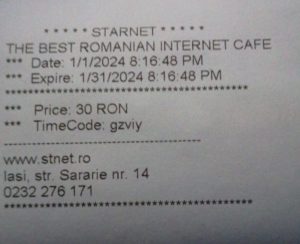It’s around 3 or 4 in the morning - and my priority right now is to make sure I open, and then close the apartment door quietly enough so that my parents won’t get woken up by my sudden appearance in the house. Although it might seem like it, I didn’t go out with my friends in the club or at the bar that night; I was coming back from a “Full Night” at the most popular internet cafe chain in town.
As common in post-communist countries, Western trends reach us 10 years later. After the fall of the Iron Curtain and the brutal transition to the free market, Romania was late with the 90’s trend of internet/cyber cafes. Thus the 2000’s were its golden age. For a good decade, every teenager had cheap and reliable access to the World Wide Web - and especially to the beast that was Counter Strike 1.6. But after ten strong years, almost overnight, internet cafes became extinct. Redditors along with old and new bloggers alike are now collectively grieving and reminiscing about the good old days of the 2000s, when the grass was greener and the internet cafes were the place to be. Yet somehow, somewhere, in the north-east side of Romania, in the city of Iași (where we grew up), bordering the Republic of Moldova, the internet cafe became a living fossil - thriving and surviving, even today.
Although the second city of Romania in terms of population, size and development, Iași remains the embodiment of the underdog. While neither as cool as the capital Bucharest nor as flashy as Cluj, Iași was blessed with a constant growth in all its sectors - including internet cafes. At its peak, Iași was home to three internet cafe franchises along with smaller establishments when most cities in the country could only host at most two or three locales. No one knows what the right ingredients were for such a miracle to happen. But what’s known is that since 2003 a new generation of internet cafes started popping up throughout the city. Slowly but surely they became a catalyst for a subculture that would eventually define entire generations of local millennial and Gen Z gamers.
What is an Internet Cafe?
Internet cafes are somewhat of a misnomer. The term is used in Romania to refer to a place that houses a specific community of gamers. According to Wikipedia, the term internet cafe refers to an establishment whose main form of revenue is made through the provision of affordable access to the World Wide Web, using high-speed internet and dedicated hardware (usually gaming computers). As with any other private endeavors, variants can pop up through mixing and matching different businesses: some internet cafes offer food/beverages, others might do some print jobs, and so on. The uniqueness of each internet cafe is not limited to the novelty of the business idea, as much as its associated community, which defines its unique purpose.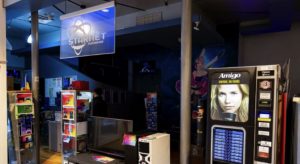 Internet cafes were originally called cyber cafes, after London’s own Cyberia Cafe (according to the Brits), although early variants of it have been documented ever since the 1980’s in Hong Kong (see archive.org, incomplete content). In the early days these places were frequented by everyday people whose needs and wants were to connect with others virtually using telnet, IRC, ftp and to surf the Web. The writers cannot go into more detail about the specifics and the vibes of that time as both of them were too young and too much into gaming to relate to specific 1990s Internet experiences (more on the decline of internet cafes in the West here).
Internet cafes were originally called cyber cafes, after London’s own Cyberia Cafe (according to the Brits), although early variants of it have been documented ever since the 1980’s in Hong Kong (see archive.org, incomplete content). In the early days these places were frequented by everyday people whose needs and wants were to connect with others virtually using telnet, IRC, ftp and to surf the Web. The writers cannot go into more detail about the specifics and the vibes of that time as both of them were too young and too much into gaming to relate to specific 1990s Internet experiences (more on the decline of internet cafes in the West here).
What we do know is that these normal people with their normal needs for virtual communication would eventually be replaced by the gamers, whose appetite for new hardware, newer games and ever-shrinking wallets made these places the perfect middle, and perfect meeting ground. And business owners were eager to welcome and adapt their locales for them. Office chairs were replaced with gaming chairs, webcams became gaming headphones, and light bulbs turned into gaming neons. Take Nexusclub: anything to make a gamer feel at home.
The World Wide Web and its avatar, the personal computer, that laid the foundation for what was to become the internet cafe. In June of 1991, SFnet was the first entity to put together the exact building blocks for one by installing 25 computer terminals throughout the San Francisco Bay Area. It thus managed to establish a working coffeehouse network. Following SFnet’s success, businesses around the area started to imitate and improve upon the original recipe, creating cybercafes and finally, the internet cafes. In the beginning, these establishments were marketed as places that gave you access to web communication services for an affordable price. It’s best to think of these places as an upgraded version of the payphone. Users would typically frequent cybercafes to send emails, browse IRC channels and do light research of current news. This is what gamers typically call “normie” behavior.
As technology, and more specifically hardware, evolved in the 2000’s, so did the scope and the clientele of some of these cybercafes. Personal Computers could now reliably run not just offline single-player games, but giants like Starcraft, Defense of the Ancients and World of Warcraft quickly became virtual staples in many hard-drives around the globe. LAN parties were just becoming popular, and innovative cybercafe owners quickly realized that they could grow big by facilitating a dedicated place for not just a LAN party, but LAN party-parties.
Why go through the trouble of creating a timetable, setting up a dedicated server and cleaning your gamer cave, when someone else could do that for you? And for cheap too. The shift from just offering access to virtual communication to including gaming in their repertoire of services is what transformed the then 'cyber cafes' into the 2000’s 'internet cafes'.
To understand how big the Internet Cafe craze became, one must look no further than to Basshunter’s hit DOTA, released in 2006 - marking the exact turning point of this mentality shift. The music video presents three main environments considered, at the time, the three epicenters of ideal Gamer life: the Bedroom, the Club and the Internet Cafe, with the last being turned into a concert-tournament hybrid.
Viewers are presented in the beginning with the imagery of the classic LAN party, with all its ups (girlfriends) and downs (moms); to be then hit with a perplexing club scene, in which no computer is seen in sight, as the focus is on the social interactions. The glue that binds it all is eventually presented in the aforementioned Concert-Tournament Internet Cafe Hybrid - the ideal marriage between the highs and lows of competitive gaming and the social adrenaline of late-night clubbing. It is the sea of computer screens, the jungle of jumbled cables and the comfort within the concrete walls of this Mega LAN Party that many gamers consider the great Internet Cafe Utopia. But how accurate was this admittedly very idealistic depiction in different parts of the world, especially in the land of Dracula? As we, the writers, were too young to experience the birth and the early life of internet cafes in Romania, we have to resort to second-hand reports. Luckily, we can get a very small but relevant overview of internet cafes in Romania straight out of 2004, in a study on Internet access in the country at the time.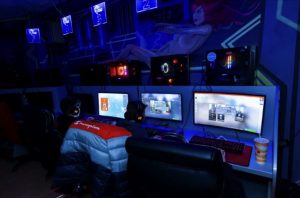 It seems that 2004 had quite the downer vibe, as the writers were not so sure about the future prospects of the internet cafe. But even from their language, we can gather that they are still using the word to reference the business model as it was operating in the West. We can therefore make an assumption that the iconic gamer identity of the Romanian internet cafe came sometime later in the Y2Ks.
It seems that 2004 had quite the downer vibe, as the writers were not so sure about the future prospects of the internet cafe. But even from their language, we can gather that they are still using the word to reference the business model as it was operating in the West. We can therefore make an assumption that the iconic gamer identity of the Romanian internet cafe came sometime later in the Y2Ks.
With the advent of the personal (home) computer, access to the World Wide Web slowly started to democratize. While in the West this started in the late 80’s, in Eastern Europe this happened in the new millennium (this source mentions how the so-called Euro200 voucher program was created to increase home computer purchases). Because of the abrupt jump to capitalism, internet infrastructure developed very quickly as there wasn’t much older tech to replace it. At the same time, access was disproportionately over-represented in urban centers. Even today on the countryside, internet access is still almost exclusively done via smart phones.
Having a (recent) Communist past that has now transitioned to a free-market democracy, Romania has seen a rapid increase in consumer goods spending and in technological advancements. Unlike the Netherlands, Romania only has had a few decades of experience to deal with this mentality shift in creating subcultures around consumer products. Yet, similar to China, Romania has a bigger sense of social cohesion. Social activities are still a much bigger part of the everyday person’s life than in NL (the weather helps a lot too). Hanging out on the street is much more common in these countries than in the West, where such behavior is more associated with (dangerous) teenagers and their unsuccessful helicopter parents.
Comparing liberal Western countries (what Romania aspired to be since 2008) to still existing Communist countries such as China (what Romania once was), democratic access to rapidly developing and affordable technology seems to accelerate the shift to gaming as a more individualistic hobby while on the other hand having a higher barrier of entry to certain hardware and using a middleman (or middle-space) seems to paradoxically create a stronger sense of community amongst gamers. Using this axis we can better understand where Romania can be placed with regards to internet cafe culture.
Internet cafes offered this unique situation where a private entity can create the ideal third place for young people who are interested in gaming to hang out through a relaxed barrier of entry, non-stop hours and affordable pricing by using recently built reliable and high speed internet infrastructure. As a newcomer to the capitalist game, Romania has made numerous enthusiastic changes to laissez-faire economic policies to contrast with its dictatorial past. Thus, the strategy of running an internet cafe had to follow this new mentality. Combine it with people’s generally more social predisposition and their love for nightlife, and you got yourself the perfect business.
Everyone was welcome, regardless of social status, ethnicity, gender or technical skill. The internet cafe was where competitive MOBA girl-gamers met with casual FIFA-enjoyer highschoolers and CS:GO-obsessed gang members. All internet cafes were populated not just during the night, but more often than not, during school hours.
Starnet
Let's focus on internet cafes in Iași and zoom in on Starnet, which was -and still is-the biggest internet cafe annex franchise in the city and a general point of reference in terms of organization, pricing and diversity of services. The choice for Starnet was made to honor our shared community and lived experience, making sure that we speak as a community member and not as a detached, cold observer. This comes with certain disadvantages, mainly the difficulties we have faced in trying to go deeper into the inner workings of Starnet as a private endeavor. Business owners in Romania are notoriously paranoid and opaque about their practices, not eager to collaborate or give details into how they run their business or what their motivations are. We had to resort to interviews with Starnet customers in an effort to still adhere to a vague sense of objectivity or integrity. What Iași offered in terms of quality, such as service, products and community, was indeed of higher quality than the country’s average.
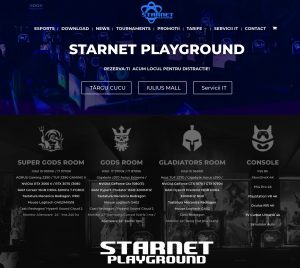 On their website Starnet proudly claims that in 2023 they celebrated their twenty years anniversary. We were unable to find any relevant information of Starnet’s inception or anything dating earlier than 2014 through unorthodox online archives such as browsing locale review sites. And knowing how private the Owner is in regards to additional details meant that it would be quite hard to assemble a complete timeline for now. Business owners in Romania are in general quite reluctant to sharing too much information, as they always risk either getting questioned by the Government (which already eats up a lot of the profits through high VAT, income taxes and much more); or they might accidentally overshare unethical business practices, which is still (unfortunately) the norm.
On their website Starnet proudly claims that in 2023 they celebrated their twenty years anniversary. We were unable to find any relevant information of Starnet’s inception or anything dating earlier than 2014 through unorthodox online archives such as browsing locale review sites. And knowing how private the Owner is in regards to additional details meant that it would be quite hard to assemble a complete timeline for now. Business owners in Romania are in general quite reluctant to sharing too much information, as they always risk either getting questioned by the Government (which already eats up a lot of the profits through high VAT, income taxes and much more); or they might accidentally overshare unethical business practices, which is still (unfortunately) the norm.
We estimate that the establishment indeed started in 2003 but the registration name would have been different and the address might as well just be someone’s apartment rather than something akin to a cafe. We looked into Google Maps as a last resort concerning the localities. Since the gaps in time are quite big, Maps only gave us only vague time intervals of activity. Through this we can confirm that the oldest Starnet was (already?) a thing by 2011, 3 years earlier than its other digital footprints. But then again, 2011 was also the first year of the Google car visiting Iași. Other online sources might point as far back as to 2008 as a legitimate period of Starnet activity, but this can only be implied by looking up Stargrill’s opening year, which was a restaurant sharing both the location and the name with Starnet. Beyond the respectable humble beginnings and perhaps some (possible) loopholes at play, we suspect that it took quite the time to eventually set up such a locale, as equipment was very expensive for the time, it needed to be upgraded quite frequently - and not to mention the egregious prices software companies demanded for commercial use. What type of small business owner would be thrilled to pay for Windows, Winrar and other such expensive expenses? For now, this is the amount of gossip we are able to entertain.
Beyond the respectable humble beginnings and perhaps some (possible) loopholes at play, we suspect that it took quite the time to eventually set up such a locale, as equipment was very expensive for the time, it needed to be upgraded quite frequently - and not to mention the egregious prices software companies demanded for commercial use. What type of small business owner would be thrilled to pay for Windows, Winrar and other such expensive expenses? For now, this is the amount of gossip we are able to entertain.
For honesty’s sake, we have to admit that our introduction to internet cafes was linked directly with high school, thus around 2015-2016. Around this time is when it felt as if the internet cafe phenomena was gaining rapid momentum. Their positioning and identity was also quite clear: this was not your grandma’s internet cafe where you log in to yahoo to check your business email or Nigerian prince scams. This was a place for hip, dank gamers who no-scope everyday while listening to Skrillex and 420 blazing it. Internet cafe owners knew what gamers, and especially teenagers, wanted.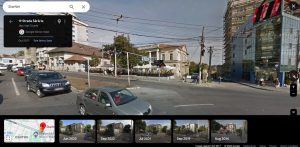 Looking at older 1990’s localities in Western Europe and the US such as Easy Internet Cafe, we were shocked by the clean, corporate look that these cafes sported. Starnet and it’s competitors could not be any more different: rooms were dark, only lit by neon bands; the computers were slim, edgy and dark; and the walls were all decorated in gamer references, usually paintings of characters from different video games, with different rooms inside of the cafe having very thematic names like Gods, Gladiators, or Pirates.
Looking at older 1990’s localities in Western Europe and the US such as Easy Internet Cafe, we were shocked by the clean, corporate look that these cafes sported. Starnet and it’s competitors could not be any more different: rooms were dark, only lit by neon bands; the computers were slim, edgy and dark; and the walls were all decorated in gamer references, usually paintings of characters from different video games, with different rooms inside of the cafe having very thematic names like Gods, Gladiators, or Pirates.
If there was one thing that Starnet focused strongly on from the very beginning, it was organization, structure and economy. The moment you stepped in as a newcomer, you were required to sign in and join their database. You were asked for your ID, fill in paperwork with basic contact information and pose for a picture. Some might consider this draconian measures, but this initiation ritual was spiritually meant to show how intertwined the virtual and physical are. On a more practical level though, knowing that every customer had a personal account, unique username and an overview of recent activities inside the establishment put a lot more weight on individual actions and responsibilities.
The Starnet Business Model
If you behaved poorly, which was frequently the case in many internet cafes, the staff could immediately intercept and penalize you. If you were a good customer and a team player, the community or staff could reward you with (sometimes under-the-hand) perks or discounts. Such manners of dealing with gaming-based communities have been also implemented in countries like Korea, where attaching limited personal information to League of Legends accounts and/or internet cafe customers has resulted in less overall toxicity and misbehavior - no wonder it also worked in Iași..
But the initial screening wasn’t done just for security’s sake. If it were just for that, Starnet would have been seen not as a successful internet cafe, but as a prison. Instead, they coated this safety measure with a UI and quality-of-life improvement virtual service. Every computer in Starnet was locked behind a log-in screen. This meant that unintended use by strangers was kept at a minimum. And more than that, every Starnet computer had a custom navigation screen, slightly different from a normal Windows configuration, so that anyone, regardless of their IT skills or experience, could access whatever virtual service they wanted at a moment’s notice. Users also had a whole internal economy they could manage through this UI and that really reinforced the idea that you are not using a regular computer, you are using Starnet’s curated version of it.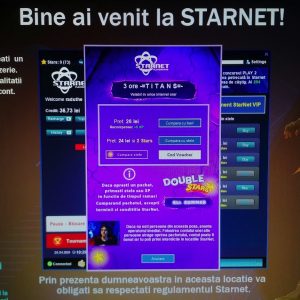 After you logged in to your account, one last thing to do before playing was to, of course, buy hours. Buying hours was the main Starnet product. Customers had the option of buying different amounts of hours that allowed them unrestricted access to the computers. You could either get a standard fee of per hour spent in front of the screen, or you could buy hours in bulk for a discount. One, three and five hour packages were usually the standard, but for dedicated gamers, even 24 hours packages could be bought.
After you logged in to your account, one last thing to do before playing was to, of course, buy hours. Buying hours was the main Starnet product. Customers had the option of buying different amounts of hours that allowed them unrestricted access to the computers. You could either get a standard fee of per hour spent in front of the screen, or you could buy hours in bulk for a discount. One, three and five hour packages were usually the standard, but for dedicated gamers, even 24 hours packages could be bought.
Starnet had their own currency called “stars”. Stars could be obtained either from unused purchased hours, or through codes that were usually handed by starnet staff directly - or by simply buying them. Stars acted as readymade discounts, every Starnet product had 2 prices: in RON, or in RON + Stars, with the latter always costing less real-life currency provided you collected enough stars. Starnets’ own user interface also kept track of your money and stars through your own dedicated wallet. Users could not just hoard or keep the spare change for future sessions, but could also show some generosity by transferring money or stars to other players, further fostering a sense of beyond-virtual community.
Along with virtual products, Starnet offered real-life products in the shape of drinks, food, and more recently, even shisha (for a good price too). Bringing food from outside was considered against the rules, although it was hard to reinforce, as even the employees themselves would bring in or order food for their impossibly long 10/20 hrs shifts. In its golden days, Starnet had a dedicated, non-stop, in-house restaurant called Stargrill, a kind of gamer cantine. Customers would usually ask Starnet staff for a Stargrill menu and after making up their mind, would walk a few meters to the restaurant desk and kitchen, shout their order and go back to their game. After 30 to 40 mins, Starnet staff would graciously visit their computer desk with a freshly cooked dish, and the customer would in turn quickly and carelessly toss the money so as to not lose the focus on their match. Stargrill offered a variety of finger foods perfectly crafted to be eaten in short, seconds-long bursts, when you were either in a match lobby, going to lane, or respawning.
Everytime you bought something from Starnet, a small receipt would be printed and handed to you. Each one started with a small message that read: “The best Internet Cafe in Romania”:
Beginning with 2015, Starnet attempted to differentiate itself from the other Internet cafes by creating a stronger community with its customer base, those being mostly middle and high school teenagers. The in-house UI always presented customers with different choices of products, like the previously-mentioned bulk hours. But now they would upgrade to contain dedicated packages based on the time of day most customers would be most active.
One such product was the now-classic “Full Night” package. This item single-handedly turned Starnet from a small local establishment to a local business giant. For the very low price of approx. 30 RON (less than 8 EUR at the time), you could sit in front of the computer for 8 uninterrupted hours starting anywhere from 20 to 2 o’clock. Internet cafes in Romania were different from its Western counterparts for having similar working hours, and being under similar jurisdiction to casinos, which were open non-stop. With this “Full Night” product, Starnet was no longer offering a better deal just compared to other internet cafes. They were now directly competing with hostels for quick and cheap overnight accommodation; and clubs for cheap and safe social entertainment. This decision inevitably transformed the Internet Cafe into the dominant alternative night scene in Iași.
Starnet employees never did background checks. Neither were they paid enough to do that. The owner could not be bothered either. Contrary to a (night) club, the bar for entry was nonexistent. This meant that for a minor, the internet cafe was their first introduction to nightlife. The laissez faire business strategy that Starnet pushed, of having a main consumer-group composed of minors, should have been a PR disaster. That was, if the authorities had been notified, or if parents were made aware of this. Luckily, most parents had no idea what an internet cafe was. The more helicopter types assumed that it was a casino, as the Romanian term for games (jocuri) was usually associated more with gambling than MOBAs.
Surprisingly, the mix of ages, backgrounds, and later on even genders, made internet cafes both the most inclusive and one of the more toxic spaces of Iași. The best way to picture oneself inside Starnet is to think of a place like 4chan or perhaps more aptly, a League of Legends /all chat, where everyone sits in the same room. Among the cacophony of mouse and keyboard clicks, curses, slurs and broken English was the norm. The occasional encouragement or sincere congratulations for carrying a match felt ten times more rewarding in this sea of intensity. Yet, no matter the frequency of f-, c-, g- and other one-letter slurs, when it came time to have a siggy break, everyone came outside the locale in good spirits, reminiscing about the crazy experience that was the previous match, regardless if it was a loss or a win.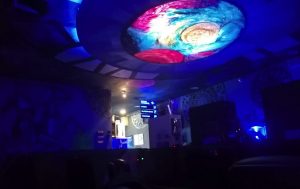 In its golden days, a Starnet establishment would usually be frequented by high schoolers skipping class, young professionals who could not afford either the Microsoft or Adobe Suite, unemployed people that would use the Internet to apply for vacancies, and sometimes by the rare homeless person who had nowhere else to stay during the long and cold winter nights.
In its golden days, a Starnet establishment would usually be frequented by high schoolers skipping class, young professionals who could not afford either the Microsoft or Adobe Suite, unemployed people that would use the Internet to apply for vacancies, and sometimes by the rare homeless person who had nowhere else to stay during the long and cold winter nights.
Similar to internet cafes in Japan, Starnet acted as a temporary shelter solution for the jobless, homeless and in general, the less privileged. For them, the internet cafe was everything a hotel could actually provide in this new era of digitalization. Starnet graciously offered not just a great selection of video games, but (questionably) legal licenses for the MS and Adobe Suites, Yahoo Mail and Google Drive, food through Stargrill, and even limited printing services in some cases.
Overnight, thousands of nerdy teenagers now had to create the most elaborate excuses to get to spend the night in what their parents thought was an elaborate casino establishmen
Portrait of a Starnet “Operator”
Starnet seemed to have a very simple hierarchical structure. There was the Owner, and immediately underneath him, the Starnet employee. The heart and soul of every Starnet location was its Operator, a person whose job was, on paper, to provide technical help when the PCs would act up. But that was just the job title. In reality, the Operator would do everything: helping people with IT problems, being a good host to the newcomers, acting as a guard when unwelcome guests would show up, doing the regular clean up, selling snacks and keeping the tab. And all of this on a 10, to even 20-hour shift (counting ciggy breaks only btw) on (less than) minimum wage. A Starnet location would usually have one to maybe two Operators active at a time, and no one else.
Though the job prospects were awful, the Operator was perhaps the best person you could befriend in a Starnet. The Operator was in many regards just like you; either a nerdy League player, or a more street-smarts guy who enjoyed his CS 1.6. Throughout your “Full Night” set (and thus, during his shift), the Operator would be right next to you, playing a round of CS:GO to slack off; bringing you a Cola while talking about how to better play your jungle main; or telling you about his break-up on a cigarette break. The Operator’s mix of slight sense of authority and relatability made him the perfect pillar for the internet cafe community, as many people likened him to the Bartender of an RPG, who introduces you to all sorts of people, stories, gossip (and quests).
To add to the persona, most of Starnet’s Operators were an important part of the community even outside of their working hours as most of them would finish their shift only to start playing as customers themselves, in turn passing the authority to the next person in charge. This shifting between employee and customer meant that every Starnet locale was deeply in touch with the wants and needs of the community - and though Starnet was a business at the end of the day, it managed to organically create a sense of community that many enterprises today could only dream of.
The man next to the cash register always seemed bored or phased out. But the moment I say the magic words: “Operator!” - his face switches with either interest, or perplexion.
Around 2016, Starnet started getting an influx of new visitors and veteran customers constantly, regardless of season, month, week or time of day. The previously mentioned laissez-faire mentality that the owner pushed for had finally paid off. So much so that new Starnet locations popped up almost overnight, in sync. The owner had also planned for each location to have a certain specialization, or niche: Starnet Târgu Cucu is by far the oldest and the most popular location, situated in an old, slowly dilapidating building. If the outside of the building gives off a slightly pessimistic atmosphere, the interior tells another story: old interwar architecture fuses with neon lights and slick gaming stations, painted walls depict different video game characters and the same 2hr club gaming playlist plays nonstop.
Starnet Târgu Cucu is by far the oldest and the most popular location, situated in an old, slowly dilapidating building. If the outside of the building gives off a slightly pessimistic atmosphere, the interior tells another story: old interwar architecture fuses with neon lights and slick gaming stations, painted walls depict different video game characters and the same 2hr club gaming playlist plays nonstop.
The location has 3 rooms filled with computers, with the central room providing an additional Playstation station, therefore it was seen as a less casual-friendly location and more as the place where you go to grind out ranked matches. This Starnet’s highlight was by far the StarGrill business which was operating in the same building. Instead of having to order and then wait up to two hours for some gamer grub, customers only had to talk to Starnet personnel and they would get their dish of choice within half an hour guaranteed.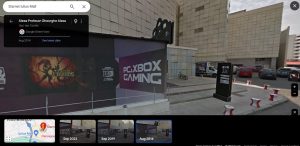 The (previously) third in size and second in popularity, Starnet Iulius was an instant hit with the local gamer community and eventually proved itself to be a successful investment for the long run. Found on the ground floor of Iulius Mall, a symbolic location where the first-ever Mall was constructed in Iași after the 1989 Revolution. Spanning over a few different rooms and even having its own entrance, outside of the Mall’s working hours, Starnet Iulius Mall was especially a hit with younger audiences. As overworked parents came to the Mall for their weekly grocery shopping, leaving their kid/ teenager sitting for 2 hours in front of a computer or a PlayStation console for the low price of 10 RON (approx. 3 Euros) seemed like the logical and safest choice. Perhaps this choice is what ultimately led to the closing of KidsLand, the Mall’s own playground, which was itself on the brink of celebrating ten years of activity.
The (previously) third in size and second in popularity, Starnet Iulius was an instant hit with the local gamer community and eventually proved itself to be a successful investment for the long run. Found on the ground floor of Iulius Mall, a symbolic location where the first-ever Mall was constructed in Iași after the 1989 Revolution. Spanning over a few different rooms and even having its own entrance, outside of the Mall’s working hours, Starnet Iulius Mall was especially a hit with younger audiences. As overworked parents came to the Mall for their weekly grocery shopping, leaving their kid/ teenager sitting for 2 hours in front of a computer or a PlayStation console for the low price of 10 RON (approx. 3 Euros) seemed like the logical and safest choice. Perhaps this choice is what ultimately led to the closing of KidsLand, the Mall’s own playground, which was itself on the brink of celebrating ten years of activity.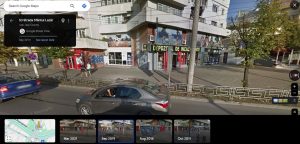 A more successful out of the new generation of franchises, the Starnet Podu Roș branch proved to be extremely profitable with its unconventional yet somehow intimate location. Hiding in plain sight right in front of one of the main city roads, Starnet Podu Roș boasted a giant “PUBG or Fortnite” banner in its glory days, no doubt an ingenious trick to get people’s attention and thus, new customers.
A more successful out of the new generation of franchises, the Starnet Podu Roș branch proved to be extremely profitable with its unconventional yet somehow intimate location. Hiding in plain sight right in front of one of the main city roads, Starnet Podu Roș boasted a giant “PUBG or Fortnite” banner in its glory days, no doubt an ingenious trick to get people’s attention and thus, new customers.
Perhaps this was also the reason why all Fortnite and PUBG competitions started happening there almost exclusively. Unfortunately the unorthodox location that was neighboring a very popular casino in the area would eventually prophesize its demise. As teenagers would begin their gaming journey by buying CS:GO skins, the allure of gambling inherent in loot boxes translated perfectly to slot machines. The smallest branch, Starnet Unirii, was strategically placed right in the middle of the bustling city center. Although at first it seemed like it was the main player, and the one to hopefully bring the most revenue, Starnet Unirii was the first branch to close permanently. Being known for its polarizing effect, customers thought prices were exorbitant for the high-end machines while cheaper tickets gave you access to subpar computers. These days Starnet Unirii is remembered to have managed to pull in the casual market, with the main money makers being the Playstation and Xbox consoles. That money, however, was not enough to keep the establishment afloat.
The smallest branch, Starnet Unirii, was strategically placed right in the middle of the bustling city center. Although at first it seemed like it was the main player, and the one to hopefully bring the most revenue, Starnet Unirii was the first branch to close permanently. Being known for its polarizing effect, customers thought prices were exorbitant for the high-end machines while cheaper tickets gave you access to subpar computers. These days Starnet Unirii is remembered to have managed to pull in the casual market, with the main money makers being the Playstation and Xbox consoles. That money, however, was not enough to keep the establishment afloat. The notorious one of the bunch, Starnet Hala Centrală, was an example in resilience, managing to outlive its Unirii counterpart despite its drawbacks. Not being known either for high-performing tech or memorable staff, and being placed in an awkward location on the first floor of Hala Centrală commercial center, this location felt more like an afterthought rather than a focused, strategic business decision. Sharing a location with a mall or commercial center can be both a blessing and a curse; Starnet Iulius Mall, with its ground-floor entrance, proved to be the first option. But Starnet Hala Centrală’s position on the first floor in an establishment with a 12 hr opening hours schedule made it challenging to access the nonstop Internet Cafe inside; especially in the weekend, and at night, when most people were most eager to gather.
The notorious one of the bunch, Starnet Hala Centrală, was an example in resilience, managing to outlive its Unirii counterpart despite its drawbacks. Not being known either for high-performing tech or memorable staff, and being placed in an awkward location on the first floor of Hala Centrală commercial center, this location felt more like an afterthought rather than a focused, strategic business decision. Sharing a location with a mall or commercial center can be both a blessing and a curse; Starnet Iulius Mall, with its ground-floor entrance, proved to be the first option. But Starnet Hala Centrală’s position on the first floor in an establishment with a 12 hr opening hours schedule made it challenging to access the nonstop Internet Cafe inside; especially in the weekend, and at night, when most people were most eager to gather.
The Dark Ages (Covid)
The rise of Starnet seemed more and more exponential, but during 2019, things seemed to mellow - locations got closed permanently and fewer people were coming. You could feel it in the prices that were growing, and in the avalanche of spur-of-the-moment limited offers, discounts and packages Starnet would send on your phone. The breaking point however proved to be March of 2020 and the worldwide lockdowns that followed afterwards. Every business got hit, but Internet Cafes were hit the hardest, as the bulk of their customers saw themselves locked inside the house for almost three consecutive months - only to be followed by more random week-long interdictions sprinkled in throughout the whole year.
To curb the huge amount of losses the business had suffered, the Owner had resorted to some drastic measures. Firstly, Starnet started operating according to casino regulations during 2021 (and 2022). This meant that the Internet Cafe was allowed to operate from morning until midnight on non-lockdown weeks and to be fully closed on lockdown weeks. This rule gave both casinos and Internet Cafes an edge against other establishments like museums, clubs or restaurants, which had very strict opening schedules, with exact visiting days being planned and announced weeks or even months ahead of time; whereas the former would just open immediately after a lockdown - at least that is what the documents said.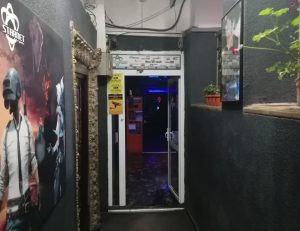 According to official documents and the vigilant eyes of the police, Starnet was conducting business as usual. Within an old historical building, Tg. Cucu Starnet was as lively as ever, although customers and staff alike were more vigilant than ever before. Some precautions had to be taken, in order for the money to come in: gamers had to sit one chair apart from each other, effectively cutting the maximum capacity in half; masks were encouraged, but not mandatory; smoking either inside or outside was strictly prohibited, so as to not draw the attention of the police; and exiting the building during a “Full Night” was the worst crime one could commit.
According to official documents and the vigilant eyes of the police, Starnet was conducting business as usual. Within an old historical building, Tg. Cucu Starnet was as lively as ever, although customers and staff alike were more vigilant than ever before. Some precautions had to be taken, in order for the money to come in: gamers had to sit one chair apart from each other, effectively cutting the maximum capacity in half; masks were encouraged, but not mandatory; smoking either inside or outside was strictly prohibited, so as to not draw the attention of the police; and exiting the building during a “Full Night” was the worst crime one could commit.
But by far the most interesting addition was the voice alerts that every computer now possessed: when staff learned that planned police inspections would take place throughout the lockdown months, they installed a customized voice announcement in each computer to alert the customers of incoming government checks. A few hours or minutes preceding the inspection, a gamer would hear mid-match a voice that would recommend customers engage in mask-wearing and social distancing while being outside their homes. The previous quick briefing by the Operator made the gamer understand that this was not a kind request by Starnet staff to conform to basic lockdown rules, but a warning call that police inspections might happen in as little as 5 minutes. They knew that by the moment they heard that voice, they had to either leave the location immediately or to wear a mask for the next few hours.
This is how Starnet managed to not only stay afloat during the worst of times, but to be more successful than even casinos, Romania’s most thriving industry; subtly managing to evade the watchful eye of the Law. Subtlety was the way to go when the government called for drastic measures.
Starnet Today
As of 2023, the wave of bad luck continues to hit Starnet. The inflation that followed the pandemic made regular customers think twice about whether or not to spend the night in Tg. Cucu or the Iulius Mall. Prices kept rising, to the unbelievable 13 RON/hr (approx. 2.5 Euros) compared to the 5 RON/hr (approx. 1 Euro) that used to be the golden standard.
Even so, Starnet is proving time and again that resilience is what wins the fight. Even with higher prices, fewer locations and a diminished customer base, the internet cafe chain still seems to stay afloat. Locations appear to be continuously populated at a third or quarter of their capacity. While the era of Starnet championships is gone, they still proudly sponsor up-and-coming pro teams to hold their title of “Best Internet Cafe in Romania”. To prove that 2023 is nothing like 2015, they have adapted to the times and are now giving extra discounts and offers to female customers to combat sexism and to hopefully reach a previously untapped demographic. Their recent acquisition of a brand new PS5 also suggests that perhaps casual players are slowly coming back too.
The second half of 2023 proved to be of help to Starnet, as Iași was nominated almost overnight as the Esports Capital of the World. Thousands of esports fans, streamers and even professional teams all met up to battle it out on the territory that Starnet called home. For a few weeks, Starnet was no longer just a successful albeit small local attraction, it was a worldwide superstar enjoying its short but well-deserved 15 minutes of fame. Perhaps a new Golden Age era will arise for Starnet? In a few decades or centuries, Iași will be known not only for being the city of linden trees, great ideas and seven hills but for being Starnet City, an evergreen protector and living museum of the Romanian Internet Cafe Spirit. However, during a recent trip to photographically document the location, the writers were informed by the photographer that the Starnet Iulius Mall was no longer active. In its place, a VR-focused establishment was built, perhaps signaling to us the beginning of an entirely new era.
Perhaps a new Golden Age era will arise for Starnet? In a few decades or centuries, Iași will be known not only for being the city of linden trees, great ideas and seven hills but for being Starnet City, an evergreen protector and living museum of the Romanian Internet Cafe Spirit. However, during a recent trip to photographically document the location, the writers were informed by the photographer that the Starnet Iulius Mall was no longer active. In its place, a VR-focused establishment was built, perhaps signaling to us the beginning of an entirely new era.
During August 2023 Iași was designated International Esports Capital. Our (not so) small city was finally put on the international map of gamers. Teams of competitive players from all around the world played their finals in Romania’s City of Culture, and, of course, Best Internet Cafes. Behind the multitude of events like championships and celebrity concerts, news of the darker motivations behind this event appeared in the public discourse. According to some of his colleagues, the mayor had been planning the Esports publicity stunt intending of laundering money for his (alleged) real estate mafia deals. As the gossip goes, the Mayor tried to cash in the 1 million Euro funds that were allocated to the event production by transferring the money to a (fictitious) foreign third-party entity responsible for event management. As is the case with European Union funds, a lot of politicians use loopholes such as third-party government companies as “partners” in production projects, and the latter’s offers and services are always mysteriously charging two to even ten times the usual market rate.
Not only was the mayor thus accused of fraud through public funds - but it seems that the third party itself, which ended up being registered under one Macedonian individual, was able to get all of the money it was transferred without a trace and suffering no consequences. A classic story of a thief being out-thieved. We were interested in recent developments of this drama and how the public at large perceives gamer culture. The decision to organize mass public events catered around gaming marks a shift in mainstream society’s now more accepting view of gamer culture and its branches, like the Internet Cafe Will the memory of Iași as 2023 World Esport Capital help propagate an active community for its internet cafes? Or will the behind-the-scenes politics tarnish their reputation and make the public skeptical as to the validity of such a subculture?
Bio(s):
Ruxandra Mărgineanu & Radu-Mihai Tănasă are both members of the Iași-based artistic colective Apartament 6 (AP.6). The Startnet project is done as part of AP.6’s overarching artistic research on authentic Balkan spaces. On a local level, AP.6 is one of Iași’s only professionally active artistic collective, developing community-based projects and organizing public exhibitions aimed at questioning the status quo of the local art scene. AP.6 has been hosting so-called “Living Room Exhibitions” meant to challenge the inherent power structures of the local art scene while still adhering to its personal roots of sincerity, childhood and private community. On an international level, AP.6 has been making concentrated efforts into building an online community/ network of fellow (migrant) artists predominately with a Eastern European or Balkan background. To this end, we have been, and continue to organize online events (exhibitions/ screenings) where we collectively explore our commonalities and differences as a geographical region that historically has had a very complicated and often overlooked history both with itself, and its neighbors.
References:
ablkholewlksintoabar. (2019). Va mai aduceti aminte de Internet Cafe-urile anilor 90? Cum erau la voi in oras? r/Romania; Reddit. https://www.reddit.com/r/Romania/comments/3exiba/va_mai_aduceti_aminte_de_internet_cafeurile/
Afacerea Internet-cafe • Buna Ziua Iasi • BZI.ro. (2001, April 11). BZI.Ro. https://arhiva.bzi.ro/afacerea-internet-cafe-21902
Arhi. (2022, February 1). Mai există internet cafeuri? Blogul Lui Arhi; Blogul lui Arhi. https://arhiblog.ro/exista-internet-cafeuri/
Arhive Săli de jocuri şi Internet cafe-uri - In Oras - Iasi. (n.d.). In Oras - Iasi. Retrieved May 13, 2024, from https://iasi.inoras.ro/locuri/sali-de-jocuri-si-internet-cafe-uri/
Basshunter. (2015, May 13). Basshunter DotA (Offical Video). YouTube; YouTube. https://www.youtube.com/watch?v=qTsaS1Tm-Ic
Beserman, E., Rușitoru, I., Dragan, M., Fierăscu, S., & Cibian, Ștefan. (2022, December 13). DIGITAL INCLUSION AND EXCLUSION IN ROMANIA 2022: A NATIONAL STUDY | Institutul de Cercetare Făgăraș. Institutul de Cercetare Făgăraș |. https://icf-fri.org/digital-inclusion-and-exclusion-in-romania-2022-a-national-study/
Contributors to Wikimedia projects. (2003, August 20). Internet café - Wikipedia. Wikipedia, the Free Encyclopedia; Wikimedia Foundation, Inc. https://en.wikipedia.org/wiki/Internet_caf%C3%A9
Cyber Internet History Museum. (2009, September 24). Wayback Machine. https://web.archive.org/web/20150109230917/http://eng.i-museum.or.kr/jsp/sub02/article_list.jsp?no=2
Dumitru, R. (2011, December 6). Mai functioneaza Internet Cafe-urile? - nwradu blog. Nwradu Blog. https://www.nwradu.ro/2011/12/mai-functioneaza-internet-cafe-urile/
Gudea, S., & Ryan, T. (2005, January). INTERNET ACCESS IN ROMANIA. ResearchGate; ResearchGate. https://www.researchgate.net/publication/237341632_INTERNET_ACCESS_IN_ROMANIA
Hong, J., & Huang, L. (2005, March 7). A split and swaying approach to building information society: The case of Internet cafes in China - ScienceDirect. ScienceDirect.Com | Science, Health and Medical Journals, Full Text Articles and Books.; ScienceDirect. https://www.sciencedirect.com/science/article/abs/pii/S0736585305000201
Iasi, Z. (2013, May 29). Elevi de primară, găsiţi de poliţişti prin Internet Cafe-uri. https://www.youtube.com/watch?v=xRwdXKzwJSo
Juliusmalliasi. (2024, January 13). Avem o nouă locație de entertainment - Parter, Fostul Starnet. TikTok - Make Your Day. https://www.tiktok.com/@iuliusmalliasi/video/7323669053896264992
Lialina, O. (n.d.). Still There - Rotterdam’s Internet Cafés. Contemporary Home Computing. Retrieved May 13, 2024, from http://contemporary-home-computing.org/still-there/belhuizen.html
Liff, S., & LÆGRAN, A. S. (2003). Cybercafes: Debating the Meaning and Significance of Internet Access in a Cafe Environment. SAGE Publications. https://journals.sagepub.com/doi/pdf/10.1177/14614448030053001
Livingstone, S., Bober, M., & Helsper, E. (2005). Inequalities and the Digital Divide in Children and Young People’s Internet Use. Findings from the UK Children Go Online Project. https://www.york.ac.uk/res/e-society/projects/1/UKCGOdigitaldivide.pdf
Malamud, O., & Pop-Elecheș, C. (2011, June 18). HOME COMPUTER USE AND THE DEVELOPMENT OF HUMAN CAPITAL - PMC. PubMed Central (PMC); PubMed Central. https://www.ncbi.nlm.nih.gov/pmc/articles/PMC3377478/
marius.bodea.iasi. (2023, June 23). Cum să furi 1 milion de euro din bani publici?? TikTok - Make Your Day. https://www.tiktok.com/@marius.bodea.iasi/video/7247916560315190554
Moraru, C. (2024, March 17). Campionatul mondial de ESports de la Iași: datorii de 2,6 milioane de euro și suspiciuni uriașe legate de cheltuirea banilor. ReporterIS - Ziar de Anchete Si Investigatii in Exclusivitate Din Iasi; ReporterIS. https://reporteris.ro/exclusiv/anchete/item/129862-campionatul-mondial-de-esports-de-la-iasi-datorii-de-2-6-milioane-de-euro-si-suspiciuni-uriase-legate-de-cheltuirea-banilor.html
Nexus Club. (n.d.). #1 Internet Cafe Bucuresti Non Stop | Nexus Club | Gamers Pub – #1 Internet Cafe Din Bucuresti . Retrieved May 13, 2024, from https://nexusclub.ro/
Portal, L. (2023, October 20). Romania and internet connectivity: success factors. Blue Europe; Blue Europe. https://www.blue-europe.eu/analysis-en/short-analysis/romania-and-internet-connectivity-success-factors/
Reuters. (1995, June 29). New York’s Latest Virtual Trend: Hip Cybercafes on the Infobahn - Los Angeles Times. Los Angeles Times; Los Angeles Times. https://www.latimes.com/archives/la-xpm-1995-06-29-fi-18601-story.html
SFnet Archive. (n.d.). SFnet | Coffee Bar Network. Retrieved May 13, 2024, from https://www.sfnet.org/lander
Starnet. (n.d.). Glassdoor. Retrieved May 13, 2024, from https://www.glassdoor.nl/Overzicht/Werken-bij-StarNet-EI_IE2382164.11,18.htm
StarNet | Gaming si Internet Cafe. (n.d.). StarNet | Gaming Si Internet Cafe; StarNet. Retrieved May 13, 2024, from https://starnet-iasi.ro/index.html
StarNet - Iasi, Județul Iași. (2014). Foursquare. https://foursquare.com/v/starnet/512a64f7e4b066f6ad8bde30
STARNET IASI SRL din Iasi Piata Voievozilor 16, CUI 34623496. (2015). Lista Firmelor Active Din România Cu Informaţii Complete. https://www.listafirme.ro/starnet-iasi-srl-34623496/
Systems, I. (2015). STARNET IASI SRL din IAŞI, CUI 34623496 - Lege5.ro. Lege5.Ro | Viitorul Documentării Legislative. https://lege5.ro/firma/starnet-iasi-srl-34623496
Zhao, L., Lu, Y., Huang, W., & Wang, Q. (2010). Internet inequality: The relationship between high school students’ Internet use in different locations and their Internet self-efficacy - ScienceDirect. ScienceDirect.Com | Science, Health and Medical Journals, Full Text Articles and Books.; ScienceDirect. https://www.sciencedirect.com/science/article/abs/pii/S0360131510001429

